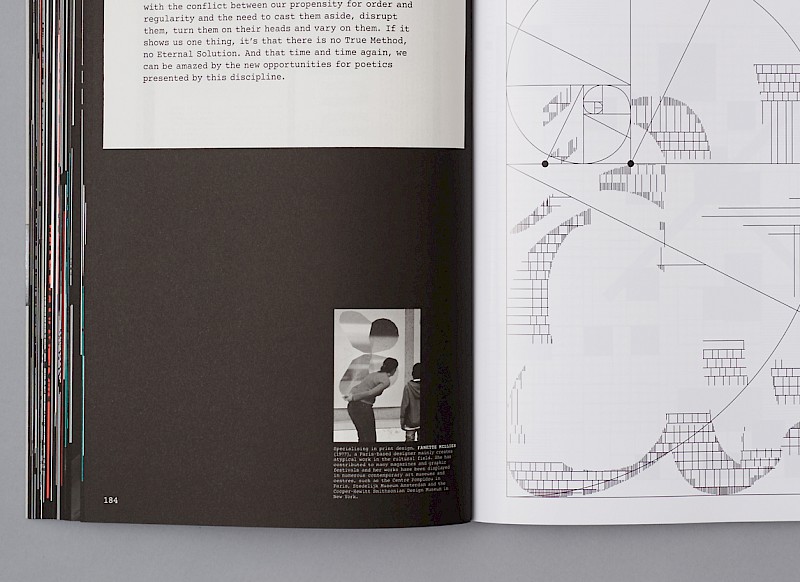
The Palace of Typographic Masonry is initiated by Richard Niessen. It's his response on the changing design climate in the Netherlands.

this imaginary building presents the craft of graphic design in an interdisciplinary cultural historical context and posits a new theory of the profession.

The layout is not based on a fixed grid but consists of A4 format sheets designed with a typeface that was originally made for writing a script. The A4 sheets also suggest to be the floor plan of this palace.

as a reader / visitor to the palace you start in the lobby after which you can visit different departments.

different kinds of content come together on the pages: more than 360 cards with ‘exhibits’, conversations from visitors, image contributions from graphic designers and different authors, bio’s... etc. and the voice of the tour guide as a steady element.

Each department has an exhibition on show in the form of several cards (white background) with mostly historical objects arranged in a way that fit the content.
In addition to that bigger cards (coloured background) with contemporary examples are floating all over the pages: they illustrate what else one could imagine in this particular department of The Palace.
In addition to that bigger cards (coloured background) with contemporary examples are floating all over the pages: they illustrate what else one could imagine in this particular department of The Palace.

each floor has it’s own colour and here we see the second floor (green) department PLAY

The tourguide (Dirk van Weelden) takes you on a tour through the palace, where you come across around 350 items and various guests and visitors.

there are people in the palace: they organize an exhibition or visit a department and exchange ideas about it. Among them are: Juan Luis Blanco, Matthijs van Boxtel, Tony Côme, Hansje van Halem, Fanette Mellier (on this page!), Els Kuijpers, Harmen Liemburg, Moniker, Richard Niessen, Hans Oldewarris, Julius Vermeulen, Dirk van Weelden

Richard is the initiator, compiler, editor and one of the authors of this book and he asked me (Esther) to design it.

the tape that connects the sheets together functions as a corridor to the next room

the way the cards are organised on the page has a connection with the content of them.

the imaginary palace is always under construction, the poles are reminiscent of scaffolding.

You want to buy the book? It's for sale at Spector Books!Or sent an email to The Palace
You want to know more about the Palace? Or you want to contribute to it? Or ask another question? Please email to The Palace!